 Between May 1535 and August 1540 eighteen monks from the Carthusian order were put to death for the same crime, for refusing to accept King Henry VIII as the Supreme Head of the Church.
Between May 1535 and August 1540 eighteen monks from the Carthusian order were put to death for the same crime, for refusing to accept King Henry VIII as the Supreme Head of the Church.
In Letters and Papers, there is a report regarding "The Charter House Moncks" taken from the collections of Camden and Stow:
"In 1535 eighteen of the Charterhouse were condemned for defending the liberty of the Church. Seven of them, viz., John Houghton, Robt. Lawrence, Austen Webster, Humfrey Middellmore, Wm. Exmeu, Sebastian Newdegate, and Wm. Horne, were drawn on hurdles through the city of London to the open place of execution, and there hanged, quartered, &c. Three of them, Humfrey, William, and Sebastian, had stood in prison upright, chained from their necks to their arms, and their legs fettered with locks and chains for 13 days. Their quarters were hanged on the gates and walls of the city and on the gate of the Charterhouse. Two of the eighteen, John Rochester and James Walwercke, remained hanging. The other nine died in prison with stink and miserably smothered, “the which were these that follow.”..."
As you can see from that account, the monks died in very different ways, all of them involving awful suffering.
All eighteen Carthusian monks have been recognised by the Catholic Church as martyrs. Here is a list of their names and how they died:
- 4 May 1535 - John Houghton, prior of the London Charterhouse; Robert Lawrence, prior of Beauvale Charterhouse; and Augustine Webster, prior of Axholme Charterhouse, were executed along with a Bridgettine monk, Richard Reynolds of Syon Abbey. They were hanged, drawn and quartered at Tyburn.
- 19 June 1535 - Sebastian Newdigate,choir monk; William Exmew, procurator; and Humphrey Middlemore, vicar - all Carthusian monks from the London Charterhouse - were hanged, drawn and quartered at Tyburn.
- 11 May 1537 - Blessed John Rochester, choir monk, and Blessed James Walworth, choir monk, both from the London Charterhouse, were hanged in chains from the battlements of York. They had been tried in the city for treason for denying the King's supremacy following the Pilgrimage of Grace rebellion.
- 6 June 1537 - Blessed William Greenwood, laybrother of the London Charterhouse, died of starvation at Newgate Prison.
- 8 June 1537 - Blessed John Davy, deacon and choir monk of the London Charterhouse, died of starvation at Newgate Prison.
- 9 June 1537 - Blessed Robert Salt, laybrother of the London Charterhouse, died of starvation at Newgate Prison.
- 10 June 1537 - Blessed Thomas Green, choir monk, and Blessed Walter Pierson, laybrother, both of the London Charterhouse, died from starvation in Newgate Prison. They were two of nine monks who were purposely starved to death for refusing to accept the royal supremacy.
- 15 June 1537 - Blessed Thomas Scryven, laybrother of the London Charterhouse, died of starvation at Newgate Prison.
- 16 June 1537 - Blessed Thomas Redyng, laybrother of the London Charterhouse, died of starvation at Newgate Prison.
- 9 August 1537 - Blessed Richard Bere, choir monk of the London Charterhouse, died of starvation at Newgate Prison.
- 20 September 1537 - Blessed Thomas Johnson, choir monk of the London Charterhouse, died of starvation at Newgate Prison.
- 4 August 1540 - Brother William Horne, laybrother of the London Charterhouse, was hanged, disembowelled and quartered at Tyburn.
One of the monks executed in 1535, Sebastian Newdigate, was a close friend of the King and a former Privy Councillor. Newdigate went as far as signing the Oath of Succession, in June 1534, but would not accept his friend's supremacy. He was arrested on the 25th May 1535 and taken to Marshalsea Prison, where he spent two weeks chained in an upright position to a pillar before appearing before the King’s Council and then being taken to the Tower of London. The King visited him at Marshalsea and at the Tower, trying to convince his friend to accept him as Supreme Head of the Church but Newdigate refused. He was condemned to death at his trial on the 11th June 1535 and was executed 8 days later.
These men were men of God and were known for their austerity and sanctity and executing them had to be one of the most brutal acts of Henry VIII's reign.
In 2013, I visited El Monasterio de Nuestra Señora de la Asunción, now known as "La Cartujua", a monastery of the Carthusian order in Granada which dates back to 1516. In the refectory of the monastery is a series of paintings by Fray Juan Sanchez Cotan, the Spanish painter and monk who was based at the monastery from 1612. The series of paintings shows the persecution of the Carthusian order and includes the suffering of the Carthusian monks in England during Henry VIII's reign. In the paintings, Sánchez Cotán depicts the monks being brought before Cromwell, some of the monks being imprisoned and chained in an upright position and others being hanged, drawn and quartered.

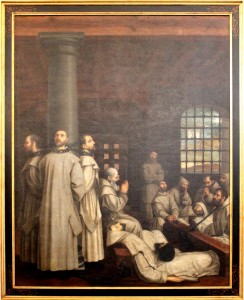

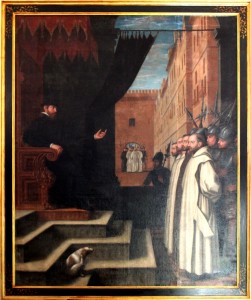
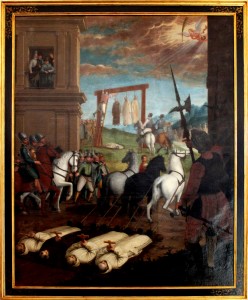
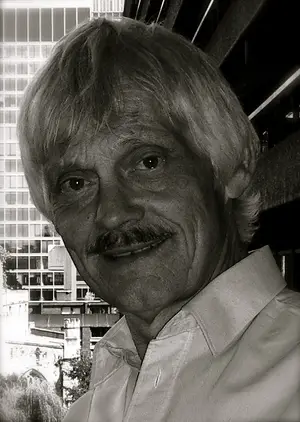
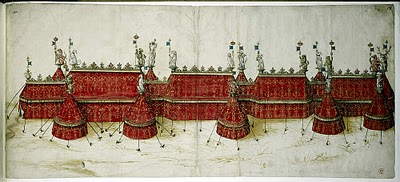

Thank you for writing this and for giving us a moment to remember the Carthusians’ suffering for their beliefs. This is why, as excellent as the dialogue and acting were, I had a problem with the TV series Wolf Hall. It omitted the violence against the Catholic martyrs and repeatedly suggested that Cromwell had a problem with torture when in fact this was something he perpetrated with Henry VIII. Their horrific torture and executions of the Carthusians is one of the reasons that many monks and friars and nuns did not resist the Dissolution. It was done to terrify and intimidate others, and it was effective
Thanks, Nancy. The persecution of the Carthusian monks, along with the execution of Margaret Pole, are for me the real low points of Henry VIII’s reign, they were such evil acts.
I tried to watch Wolf Hall with an open mind but Cromwell was portrayed as the nice guy and Thomas More as the not very nice characted. I gave up on it!!!
Apart from Elizabeth Barton (the holy maid of Kent) who’s characther was questionable I don’t think there were any women religious who were executed during the reign of Henry VIII or subsequent monarchs?
Anne Askew who was racked before she was burned at the stake
Nancy, I agree about the way Cromwell appeared to abhor torture in Wolf Hall. The violence of these times just did not come across, but then we do live in a time when stuff for TV seems to be made in such a way so it does not upset viewers sensibilities when it comes to historical subjects. Ironically, the increasing amount of violence in films and other TV series appears to be getting worse.
I abhor violence, but when it is part of history, then I think it needs to be portrayed in order to create the ‘reality’. Perhaps then, audiences will realise that we haven’t become any nicer than our ancestors. For instance, The Game of Thrones has a rather high body count and that’s fiction, so why do the directors of historical series like WH insist on sanitising real historical fact?
I think that Rylance was not nearly menacing enough to play Cromwell. You only have to look at Cromwell’s portrait in the Frick collection to get an idea of the man behind the mask. Holbein has captured Cromwell’s ruthlessness perfectly. No doubt he had no compunction is ordering Margaret de la Pole’s excution, even though Henry could quite easily have decided not to sign the death warrant. I could not buy into the idea that Cromwell was a ‘nice’ person under all the statecraft.
Claire, looking at the dates of the various deaths of these poor men I saw the majority of them died after Henry’s jousting accident. Do you think these despicable executions had something to do with his increasing irascability? It would be interesting to see what the neuro specialists think.
Thank you for posting the Juan Sanchez Cotan paintings. They are extremely interesting.
As you so rightly say, these executions are the real low points of Henry’s reign. May the monks rest in peace.
Melanie, Cromwell didn’t order the death of poor Margaret Pole since he was already dead by 27 May 1541.
Bren, i do not see that Melanie ever wrote that Cromwell ordered the death of M. Pole, the plantagenet family member and i believe Hanks 8’s god mother. pls. re read that. C. just noted just that it was the low point of Henry’s holocaust.
For my part, i think his ordering the death of the Carthusians in York in chains which is often mis understood is especially low , as was his duplicity with the leaders of the Pilgrimage of Grace. Melanie, may the monks rest in peace? ! – they reign in their own marvelous castles in Heaven with the Lord Jesus before the Father Himself – may they intercede for us ! before His Tribunal in this, our own time of woe
For me these men are some of the bravest people in history. They knew the terrible penalties that would meet them if they remained true to their faith but they remained steadfastly to their faith, to their resolve. The Tudors may not have invented the terrible penalties for treason but they were determined to use it to terrorize. The use of such extreme measures is particularly shocking when you consider that these people were men and women of God whom Henry Viii had once respected and admired. Henry was only a few short years earlier a devout Catholic who went on holy pilgrimages to the very shrines he now destroyed, many of these same men that he so cruelly tore apart were well known to Henry, they were among the most well educated and reverend people in the realm, yet he treated them more savagely than others he may have believed to be far more dangerous. The singular minded brutality with which Cromwell was allowed to pursue his policy of destruction of the monasteries and the men and women who could not in good conscience accept the supremacy showed a startling disregard for human dignity and due process. Henry Viii and Cromwell during this period were totally without mercy. I would love to blame the bang on the head in 1536, but the killing started prior to this, although it quickly imploded afterwards. I think a series of bitter events hardened the King and Cromwell took shere delight in his evil purposes, he was left unchecked to purge all whom he saw as enemies of the state. The divorce had left a bitter taste, opposition to the King was growing and Cromwell wanted this ended, Henry wanted all voices who did not support his marriage to Anne silenced, the bitter disappointment with his marriage to Anne not producing a male heir, fear of foreign invaders, the perceived betrayal by Anne and five members of the court, even though they were innocent, Anne’s execution, and finally the rebellions in the north, had all contributed to the growing fear of Henry being overthrown, and to an intense heightened sense of paranoia. No doubt Henry Viii was different after the accident of 1536, but other factors played a part. Cromwell to me almost seems to have enjoyed making things worse and to have enjoyed terror. I completely agree that TV writers have to sanitize things, they are afraid to show reality. I am not asking for Game of Thrones or Tudors sensation but we have to show history realistically or we don’t learn. Having said that Raylance has eyes which haunted and frightening me, even if his version of Cromwell was whitewashed and turned into a saint by a writer who just could not get the balance right.
I think that the AGONY OF THE CARTHUSIAN MONKS – – condemned by Henry the VIII AND Cromwell is absolutely awful and shows that even in that violent age was absolutely cruel and senseless – i think the King was really ill in his mind and Cromwell terrified of losing his influence and his power — Henry the VIII to my mind became cruel ,because it was a cruel age ,but also because of his frustration about not having a male son to succeed him ,and his disaoointment with his mariage to Anne Boleyn .Passion and love turned into hate …..
For me, the awful ends of the Carthusian monks shows clearly that Henry VIII was capable of brutal behaviour before his 1536 accident. They were men of God. It’s sickening.
Thankyou Claire for your insight….I know you’re not a catholic but you are very balanced in your comments. I think Henry was just a vile monarch. I cannot think of anything he should be rememberd for..but I stand corrected. It’s admirable to know that the Carthusian monks of London are remembered in a monument and/or plaque close to their old home.
Henry VIII was said to have had syphilis. This affects your mind and body, although there are reports that he did not have it. I tend to think he did because of the times he lived. Bloodletting was done as a cure, afterall.
It’s actually a myth that he had syphilis. We have his medical expenses and what treatments were used on him and there’s no mention of syphilis or its symptoms.
Henry was an excellent administrator who wrote poetry and kept the books,he was not ill in the mind,he was a self centred monster who would not be brooked in anything.Am sure he has been sitting in that very hot place for the last 600 odd years.
“Men of God” means nothing. Sadly. God can be used in so many ways, right and wrong, that he is a meaningless, empty, concept. If everything is true, nothing is true. In his place you can put whatever you want, good, evil, indifference, love, hate – anything. And that’s a problem. The hatred on the faces of the men in Pakistan protesting about Asia Bibi is as godly as she is. Or not. Intolerance is what is evil, but tolerance sits very uneasily with religion. Just look at the Inquisition. Would the Charterhouse monks have supported the brutality of the Counter-Reformatoon? Probably.
So by your argument that justified the cruel way in which these men of faith, not religion, faith, were executed for denying the self appointment of Henry Viii as the Head of the English Church did it?
These men were persecuted purely for their personal faith and refusal to acknowledge a title to which Henry Viii was not entitled. This was a cruel attack on the ancient traditional Church, pure and simple, for greed, power and because Henry could not get his own way in the marriage stakes. Yes he was desperate for a male heir but this was too far.
Nobody is condoning the Inquisition either or the cruelty of any form of persecution, but you cannot blame innocent people for the actions of others and we don’t know how they would feel about the Inquisition. Given the holiness of some of them, the love they showed, they may well have condemned any form of forced conversion or violence towards others. Henry allowed Cromwell to starve, torture, hang in chains and then consented to this horrible execution not only for 18 Carthusian monks, but Franciscans, the very friars from the Friary in which he was married at Greenwich, Brigitte priests and several others, men and women who disagreed with his Supremacy. Cromwell was mostly responsible for overseeing all of this, but Cromwell was gone and the killing continued.
Whether Henry Viii had gone mad, was power crazy, had become more and more vengeful towards those who opposed him over the years and wasn’t prepared to accept any more criticism or opposition, had become bitter after a long annulment or was brain injured or all of the above, the mid 1530s onwards saw the destruction of those he loved and his growth into a man of tyrannical power whose cruelty was demonstrated in these mass examples of power. The Supremacy gave Henry Viii more power than any other monarch and he became consumed by it. Many of the men from the Charterhouse were known personally to King Henry and Thomas Cromwell, they were officers of his chamber and the Privy Council. The Charterhouse was particularly well known for being holy and upright, for its integrity and charity and its reputation was spotless. Belittling the sacrifice of these men is totally ridiculous.
for all his evil Henry VIII did not accomplish much he died a horrible death, his son died young and he has no successors. Plus I am certain for all his evil and weakness to women he married and those he murdered priests and religious he more probable lost his immortal soul. So what does a man accomplish if he is lost?
I’m not condoning Henry in any way, but he did achieve a significant amount – the break with Rome which started the English Reformation, his authorisation of the English Bible, building and renovating palaces and fortresses, founding the English Navy… and those are just a few. He also did manage to secure the succession and pass the throne on to his son, unchallenged too.
I have nothing but admiration for these Carthusian Monks , however violence was endemic throughout Europe. The treatment of the Conversos in Spain by the Spanish Catholic Inquisition was cruel and heartless as well . All religious persuasions at this time often behaved abominably including the Catholic Church .
Yes unfortiunately it was.
Funny,you want to get rid of some one,then why torture. The desire to give pain to a human being is in it self a distorted mind set. Criminals executed are done so with the least possible pain.
The king was oblivious to say the least paranoid.
A.H.Pereira
First Christ
Then the Proto Martyrs of Rome,
Then more Martyrs,
More still to come???
I came here doing research on the Carthusian’s habit which I am undertaking as preparation for a painting I am about to make of Saint Hugh of Lincoln.
Your topic here combines two of my passions, Spain and the attempted annihilation of the Catholic faith in England. It is wonderful that you have included the paintings of the monks. Thank you. You have given me a focus for my next visit to Granada. I shall try to see them.
I find the paintings especially powerful in the light of the comments about depicting history in TV drama. Particularly telling is the depiction of the quartering of the monks. Superficially, it is quite a blithe, colourful and pretty painting, the central figure smiling in his work, butchering the monks, as if doing no more than a slaughter man might in and abattoir. The point is made even more strongly by the two boys behind him, chatting as they carry the haunches of human over their shoulders like sides of pork. They could be “re-enactment” kitchen boys in today’s tourist mecca, Henry’s “gift” from Wolsey, Hampton Court. All of this is in something of an idyllic landscape, the colourful quality of the painting adding to the impression of some kind of fete. Contrast these figures and feelings with the silent dignity of the monks in the other pictures.
I knew of the martyrdom of the Carthusians, but I did not know of these wonderful paintings, which bring the state terrorism of Cromwell and the bestial nature of Henry VIII into such focus by such gentle means. That the painter was a monk himself, and presumably a Carthusian, is not surprising, as his point is made vividly, with quiet dignity.
I suppose in an attempt to understand, other humans will give reasons for Henry’s behaviour, like syphilis; Mark Rylance, giving a performance of a rounded human being, when, Cromwell’s deeds say he was a thieving, social climber; a gangster. It is a bit like Lord Longford in his charity, trying to humanise Myra Hindley, when all she was is nothing more than a vicious, cruel, child-murderess.
My painting is for a pre-reformation church in Lincolnshire, dedicated to St Denys. As the church is in the Anglican Lincoln dioses, it will be a diptych of St Hugh and St Denys. I had worried about the reaction of making a depiction of the martyred bishop St Denys, with his usual attribute; he is traditionally depicted as a bishop carrying his head in his hands, after his beheading. Seeing these painting has removed any concern.
My painting is to mark the Platinum Jubilee of Elizabeth II. I feel it is even more important I should paint the picture after being here.
Thank you .
Well it was an affront to the entire religious community in England and abroad at the time for these monks to be executed in their religiousv habits. The habit consists of the tunic, and the scapular with bands attached to the sides and the hood attached to the scapular. No beads or rosaries.
Not only a low point in Tudor history but a low point in English history. One has to wonder what the likes of Thomas Cranmer and many of the other English bishops did to intervene on the case of the Carthusians. I suspect Cranmer did nothing or cared less because by this time he was a reformer and the Kings yes man and he despised the monastic (religious) life….he was not present at the final profession of monks at Christchurch Canterbury….which was the norm for the archbishop. I have read quite a bit about Cranmer and have no time for him. As far as the other English bishops are concerned (with the exception of John Fisher) thay had no backbone! they looked out for themselves.
Further to my comment above, I suspect that many of the English bishops thought that this was just an episode to ride out…so to speak and that all would eventually settle down. Over the centuries Princes had fallen out with the papacy over different issues and eventually things ahd been resolved.
There are paintings of the execution of the monks in either the Chapel or the Chapter House of St Hugh’s Charterhouse (called Parkminster). You can see them on their website. I gather very few lay people have seen them as this is a very strict Order and (I doubt) the chapel would be open to the public for worship. One of the London monks Dom Maurice Chauncey (I think that spelling is correct) survived by taking the oaths. He left England for the Continent (I think Flanders) and then returned to England (as Prior) when Queen Mary re-established the Carthusians briefly at Sheen. On the accesion of Queen Elizabeth once again the Priory was dissolved and the community went back to the continent. He left a great deal of writing about the history of the London monks (which I read) and it makes for fascinating reading.
There is a saying among catholic clergy that at their Episcopal Ordination bishops have ther backbone removed.
BEWARE; as the saying goes – “Power corrupts, absolute power corrupts absolutely”.